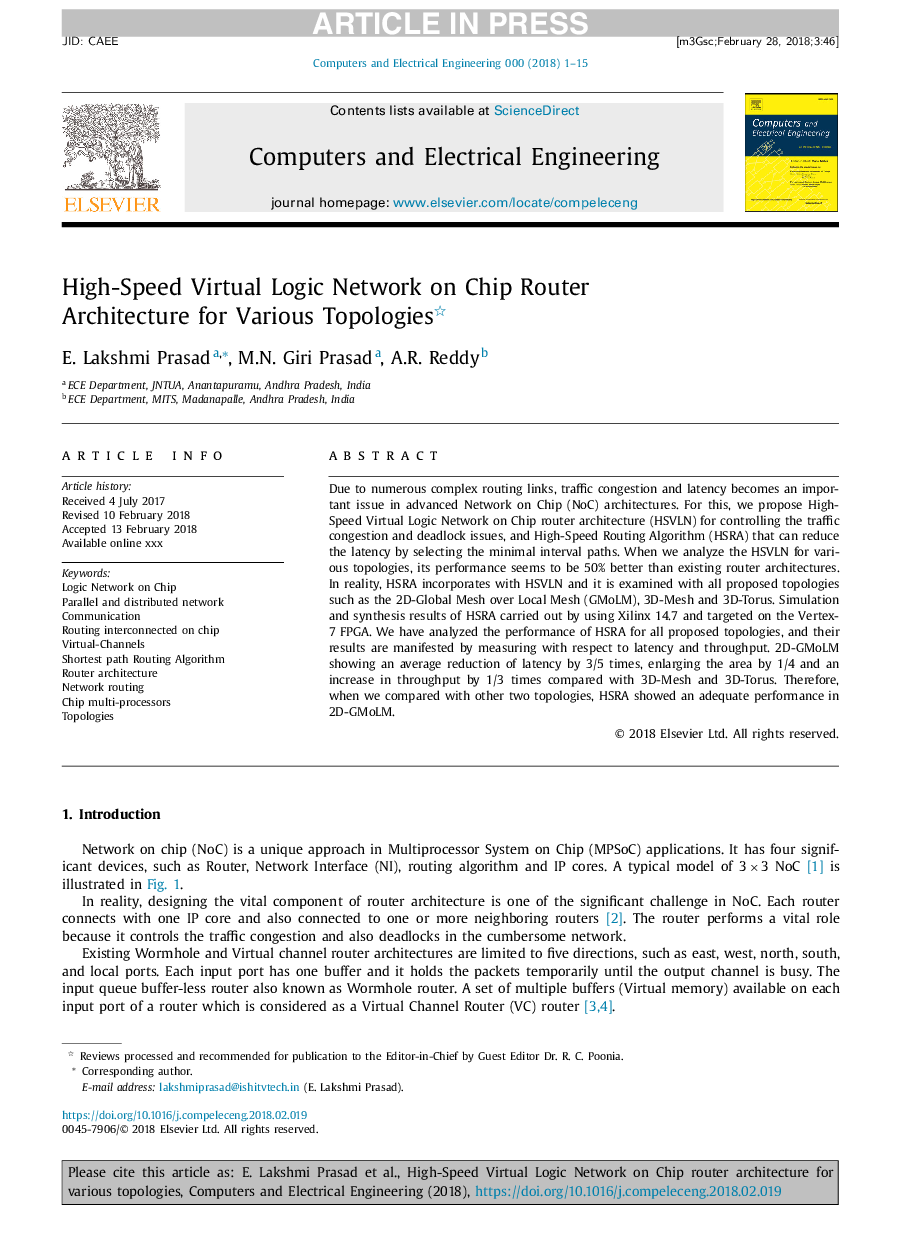| Article ID | Journal | Published Year | Pages | File Type |
|---|---|---|---|---|
| 6883480 | Computers & Electrical Engineering | 2018 | 15 Pages |
Abstract
Due to numerous complex routing links, traffic congestion and latency becomes an important issue in advanced Network on Chip (NoC) architectures. For this, we propose High-Speed Virtual Logic Network on Chip router architecture (HSVLN) for controlling the traffic congestion and deadlock issues, and High-Speed Routing Algorithm (HSRA) that can reduce the latency by selecting the minimal interval paths. When we analyze the HSVLN for various topologies, its performance seems to be 50% better than existing router architectures. In reality, HSRA incorporates with HSVLN and it is examined with all proposed topologies such as the 2D-Global Mesh over Local Mesh (GMoLM), 3D-Mesh and 3D-Torus. Simulation and synthesis results of HSRA carried out by using Xilinx 14.7 and targeted on the Vertex-7 FPGA. We have analyzed the performance of HSRA for all proposed topologies, and their results are manifested by measuring with respect to latency and throughput. 2D-GMoLM showing an average reduction of latency by 3/5 times, enlarging the area by 1/4 and an increase in throughput by 1/3 times compared with 3D-Mesh and 3D-Torus. Therefore, when we compared with other two topologies, HSRA showed an adequate performance in 2D-GMoLM.
Related Topics
Physical Sciences and Engineering
Computer Science
Computer Networks and Communications
Authors
E. Lakshmi Prasad, M.N. Giri Prasad, A.R. Reddy,
